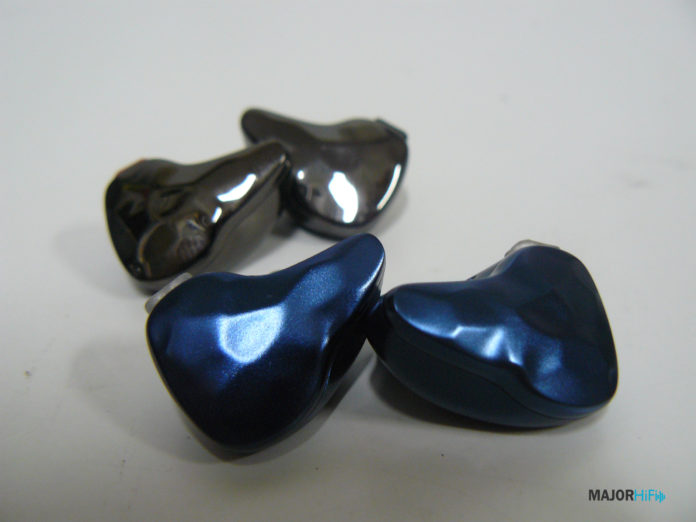We can’t enough budget IEMs here at MajorHiFi. Recently, We’ve taken a look at a host of different earphones from a variety of manufacturers. One of those brands is Ikko, which has made a great impression on me with two of their models in particular. Their goal is to make high-fidelity accessible to those who may not have the cash to spend on the more extravagant audiophile IEMs. They tout an audio/visual experience, innovating in not just sound quality, but in design as well. I’ve reviewed two of their most notable models, the Obsidian OH10 and Meteor OH1. Both earphones are worth their generous price point, especially when you can get them on sale. However, if you had to pick one, which would you choose?
What You Get
For the Obsidian and the Meteor, you can expect the same amount of contents in each. Both IEMs have similar packaging, with the same list of items inside. They both come with a stylish pin, and the fabric pouch is the same. You get the same amount of ear tips as well, each containing three sets of small, medium, and large, tips. The only real difference here is the stock cable. With the Meteor, you get a 2-pin cable made from four strands of eight high-purity oxygen-free copper. The Obsidian’s cable doesn’t give any spec like that, so I assume the makeup of both cables is different.
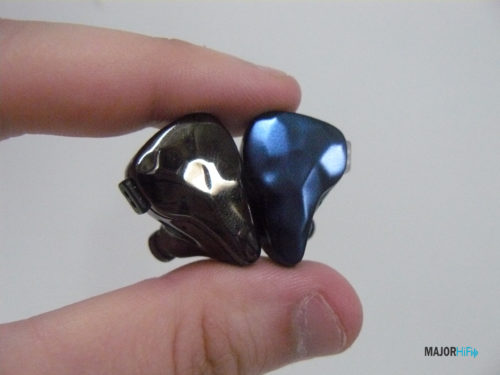
Look and Feel
Taking a look at both IEMs side by side, it’s easy to see the immediate similarities. The same unique, tooth-like design is present in both models. They’re the same size and shape, but the obsidian features a layer of gloss, while the Meteor presents a more matte finish. Aesthetically, both IEMs are gorgeous, and I can see repeating this design in future IEMs as well. Holding them both in my hand, I can feel a bit more weight coming from the Obsidian than the Meteor. In comparison, the Meteor feels more hollow, and maybe lighter in the ear. In terms of comfortability, the Obsidian has more of a feel than the Meteor. The Meteor almost feels invisible compared to the Obsidian, but both feature a secure fit that’s placed firmly. No matter which one you choose, both IEMs will leave you satisfied with their level of comfortability.
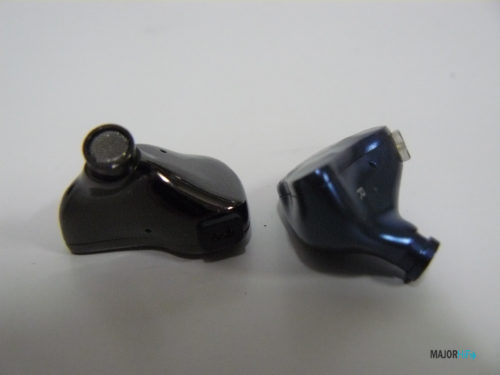
Design
Underneath the surface, both IEMs exhibit their unique driver system. The Obsidian is a Knowles balanced dual-driver hybrid, while the Meteor uses a dynamic driver and a single balanced armature. Both are hybrid systems with 10mm units. Some of the components used make all the difference though. A titanium and platinum coating is used for the Obsidian, protecting it and using the material to help further shape the sound signature. The Meteor also uses titanium, but for its polymer diaphragm film.
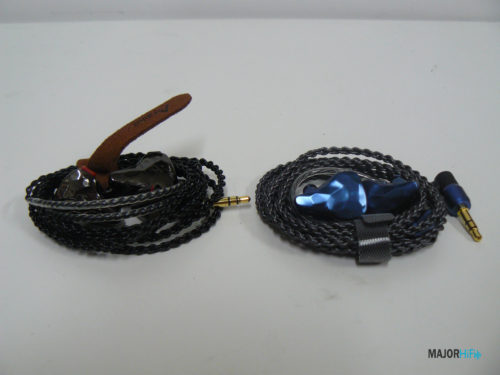
Output
Each IEM features a low impedance and should be easy to drive without being privy to harsh levels of volume. Both IEMs run fine connecting to any 3.5mm headphone jack, whether you’re lucky enough to still have one on your smartphone or laptop. However, there is a noticeable difference in output power between the two in terms of signal flow. The Obsidian likes to push the sound more forward than the Meteor, especially for conventional headphone connectors. I recommend a portable DAC/amp adapter more for the Meteor in order to get the fullest sound from it.
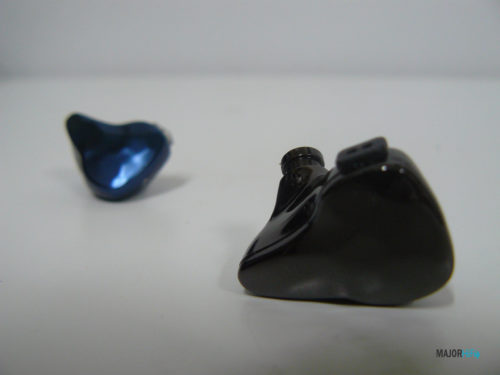
Soundstage
When reviewing both soundstages back to back, I initially thought that the Obsidian and Meteor were going to be tough to call. However, this isn’t actually the case, because I preferred the soundstage of the Obsidian in almost every way. The amount of width and depth you get on the Obsidian far outweighs the narrow, linear imaging of the Meteor. With the Obsidian, the sounds have a natural width and height, showcasing all the elements with proper fullness and solidity. With an added bit of clarity and resolution, the Obsidian portrays a much more immersive field than the Meteor. You still get a good sense of articulation on the Meteor, and the spatial imaging is still top-notch. However, it doesn’t stick out when being compared to the lush soundscape of the Obsidian.
Low End
The Meteor starts to show its value in the bass, where a deep sub-bass resonance helps the sound signature make a considerable impact. It’s just exaggerated enough to be satisfying without damaging the rest of the timbre with a bloated response. Low frequencies are kept well separated and with great texture. You also get a textured bass with the Obsidian, but much more laid back, and not as much sub-bass. It’s a cleaner response for those who aren’t as bass crazy.
Mids
Midrange frequencies are granted a much fuller tonality on the Obsidian. Just from listening to a few tracks, you can tell that the mids here are very lively. With the Meteor, you get a nice low-mid emphasis, but lack the richness of the Obsidian. There’s still some great detail on the Meteor, except the level of fidelity isn’t as apparent. In response, the midrange on the Obsidian comes off as much more natural, and tender.
Highs
To complicate things even further, the Meteor possessed more lush highs than the Obsidian. Although the Obsidian has some great high mid accentuation but doesn’t display the crispness and sparkle of the Meteor. Some might not be a fan of its peakiness, but it’s a quality I preferred over the Obsidian’s flatter treble response.
Summary
Analyzing the sound signature of the Obsidian and Meteor turned out to be messier than I thought. Both IEMs play their strengths extremely well, with their less extravagant features not really taking away anything from the overall timbre. They both have a striking look and share an even level of comfortability. Here’s what it comes down to. If you like a heavy, chest-pounding bass with sweet highs, go with the Meteor. However, if you like a great soundstage with depth and spaciousness, all while sporting a rich midrange with a natural timbre, go for the Obsidian. Whichever one you end up choosing, Ikko has made two affordable IEMs more than worth their price point.
The Ikko Obsidian and Ikko Meteor are available at Audio 46.
MAJORHIFI may receive commissions from retail offers.


